Clinical studies are carefully designed research studies that investigate the safety and effectiveness of medical interventions, such as consumables or topical, medical devices, and treatment protocols. They play a crucial role in the medical industry for several reasons:
- Safety and Efficacy: Clinical studies provide rigorous evidence on the safety and effectiveness of treatments, devices or consumables or topical.
- Evidence-Based Medicine: Clinical studies form the foundation of evidence-based medicine, which emphasizes the use of the best available scientific evidence to guide medical decision-making. This approach helps ensure that patients receive the most effective and appropriate treatments.
- Public Health: Clinical studies contribute to public health by evaluating the effectiveness of public health interventions, such as vaccination programs and disease prevention strategies.
This information is for educational purposes only and may not be applicable to all individuals. While these studies provide valuable insights into the science behind hair loss treatments, individual factors may influence the effectiveness and suitability of specific treatments.
Schedule a consultation to speak to our doctors.
What Are Clinical Studies in Hair Loss?
Clinical studies in hair loss are medical research papers that detail the testing of specific hair loss treatments. They can provide valuable insights into the effectiveness of specific treatments. A typical clinical study is structured to provide a clear understanding of the study’s purpose, methods, and findings.
Here’s a breakdown of a typical clinical study structure:
- Background: Explains why the study was conducted and the medical problem being addressed.
- Objective: States the purpose of the study and what it aims to achieve.
- Methodology: The processes and steps taken to conduct the study, including how participants were selected and how the treatment was administered.
- Results: Provides data and statistical analysis showing the outcomes of the study.
- Conclusion: Summarizes the findings, discusses the study’s implications, and any factors that may have influenced the results.
Accessing the Reliability of a Clinical Study
Research content is provided for informational purposes only and should not be considered a substitute for professional medical advice. Before making any conclusions, consider the following:
- Check the Publication Source: Reliable medical journals are typically peer-reviewed and maintain rigorous peer-review standards. Reputable journals ensure that the studies they publish have undergone several evaluations by experts in the field.
- Consider the Impact Factor: The impact factor of a medical journal measures its influence and frequency of citation in academic research. Journals with higher impact factors are generally considered more influential. However, even with high-impact journals you should compare information from multiple sources to gain a well-rounded perspective.
You can find the impact factor of a journal listed online.
Relevant Clinical Research for Further Readings
- Follicular Unit Extraction
- Using the follicular unit extraction technique in treatment of male androgenetic alopecia. Impact factor: 1.6.
https://link.springer.com/article/10.1186/s12893-024-02655-1#Tab6
- Platelet Rich Plasma Therapy
- Treatment of male pattern alopecia with platelet-rich plasma: A double-blind controlled study with analysis of platelet number and growth factor levels. Impact factor: 12.8. https://www.jaad.org/article/S0190-9622(18)32643-4/abstract
- The Effect of Autologous Activated Platelet Rich Plasma (AA-PRP) Injection on Pattern Hair Loss: Clinical and Histomorphometric Evaluation. Impact factor: 6.7.
https://onlinelibrary.wiley.com/doi/full/10.1155/2014/760709
- Fotona Laser
- Non-ablative Er:YAG laser is an effective tool in the treatment arsenal of androgenetic alopecia. Impact factor: 2.3. https://pubmed.ncbi.nlm.nih.gov/34435735/
- Steroid injection
- Intramuscular Corticosteroid Therapy in the Treatment of Alopecia Areata: A Time-to-Event Analysis. Impact factor: 4.7. https://pmc.ncbi.nlm.nih.gov/articles/PMC8752075/
- Regenera Activa
- Autologous Cellular Method Using Micrografts of Human Adipose Tissue Derived Follicle Stem Cells in Androgenic Alopecia. Impact factor: 4.9. https://pmc.ncbi.nlm.nih.gov/articles/PMC6678214/
- Sylfirm X
- A pilot split‐scalp study of combined fractional radiofrequency microneedling and 5% topical minoxidil in treating male pattern hair loss. Impact factor: 4.1. https://academic.oup.com/ced/article-abstract/43/7/775/6597272?redirectedFrom=PDF&login=false
Schedule a consultation to speak to our doctors.
Disclaimer: Information presented is accurate at the time of print. Websites and references listed are not endorsed by 21 Medical Aesthetics and do not necessarily reflect the views of our medical team. Information is researched and displayed for demonstrative purposes only. It should not be used for personal diagnosis or as a substitute for professional medical consultation.
External Links
| Navigating Hair Restoration: A Guide to International Medical Journals |
| Singapore Medical Resources & Associations |
| Anatomy of the Scalp And Hair |
